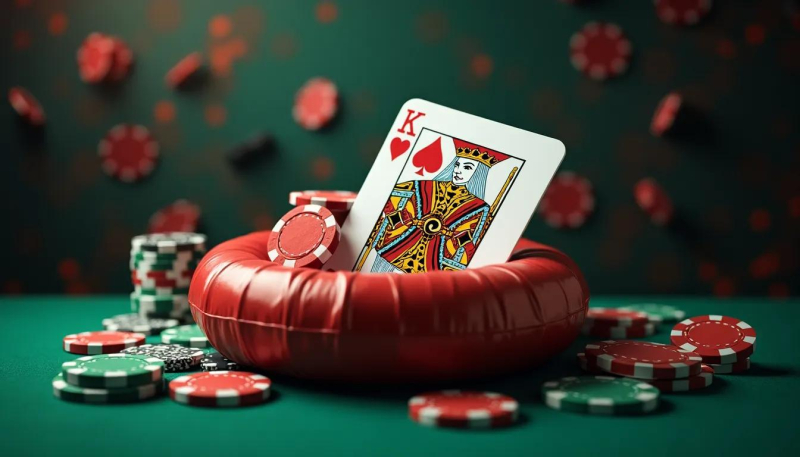Picture this: you’re seated at a high-stakes poker table, a mountain of chips in front of you, your opponents studying your every move. As you consider your next move, a sly smile plays at the corners of your lips. You’re about to execute the perfect poker float, a strategic maneuver that can turn the tide of the game in your favor. But mastering the art of the poker float takes skill, timing, and finesse. In this article, we’ll dive deep into the world of poker floats, exploring strategies and techniques to elevate your game to the next level. Get ready to up your poker game and leave your opponents in awe as you master the art of the poker float.
Mastering the Art of the Poker Float
Mastering the art of the poker float requires a combination of skill, strategy, and timing. By understanding how to effectively execute a poker float, you can gain a competitive edge at the poker table and increase your chances of success. This strategic guide will provide you with valuable tips and insights to help you master the art of the poker float.
One key aspect of the poker float is knowing when to make your move. Timing is crucial in poker, and knowing the right moment to execute a float can make all the difference in the outcome of a hand. By carefully observing your opponents’ betting patterns and tendencies, you can identify opportunities to use the float to your advantage.
Another important element of mastering the poker float is bluffing effectively. Bluffing is a fundamental skill in poker, and when done correctly, it can help you win pots and confuse your opponents. By combining the poker float with well-timed bluffs, you can keep your opponents on their toes and increase your chances of success at the table.
Understanding the Concept of Poker Floating
When it comes to playing poker, understanding the concept of floating is crucial for mastering the game. Floating in poker refers to calling a bet on one street with the intention of taking the pot away on a future street. This strategic move can be a powerful tool in your arsenal, allowing you to outmaneuver your opponents and win more pots.
One key aspect of successfully executing a float is identifying the right situations to do so. It’s important to pay attention to your opponent’s betting patterns and tendencies to determine if they are likely to fold to future aggression. By carefully selecting the right spots to float, you can increase your win rate and put pressure on your opponents.
Additionally, it’s crucial to consider your own image at the table when employing the floating strategy. If you are perceived as a tight player, your floats will carry more weight and be more effective. On the other hand, if you have a loose image, you may need to adjust your floating frequency to avoid being exploited by observant opponents.
Key Elements of a Successful Poker Float
Mastering the art of the poker float requires a deep understanding of key elements that can lead to a successful strategy. By incorporating these elements into your gameplay, you can outsmart your opponents and increase your chances of winning big. Let’s dive into the essential components of a successful poker float:
Timing: Timing is crucial when executing a poker float. It’s important to consider the betting patterns of your opponents and choose the right moment to make your move. Waiting for the perfect opportunity can greatly increase the effectiveness of your float.
Observation: Pay close attention to your opponents’ behaviors and tendencies. By observing how they react to different situations, you can gain valuable insights that will help you decide when to execute a successful float. Take notes on their betting patterns, body language, and overall playing style to inform your strategy.
Timing and Selecting the Right Opponents
Timing is crucial when it comes to executing a successful poker float. You don’t want to make a move too early and risk getting called, nor do you want to wait too long and miss your opportunity. Finding the right balance between patience and aggression is key in mastering this strategic play.
Selecting the right opponents to float against can significantly increase your chances of success. Look for players who are likely to fold to a well-timed bet, such as tight-aggressive players or those who are prone to bluffing. Avoid floating against loose-passive players or those who are likely to call with any hand, as they can easily outplay you on later streets.
When deciding to float, pay attention to the board texture and your opponent’s betting patterns. Look for opportunities to represent a strong hand and apply pressure. Remember to stay composed and focused, as the success of a poker float often relies on your ability to read your opponent and make calculated decisions. By mastering the art of , you can take your poker game to the next level.
Psychological Factors and Mind Games
To truly master the art of the poker float, one must understand the intricate dance of at play during a game. It’s not just about the cards you hold, but also about how you strategically play them against your opponents. By utilizing psychological strategies and mind games, you can gain an edge at the poker table and increase your chances of success.
One key strategy in mastering the poker float is to pay attention to your opponents’ behavior and betting patterns. By observing how they react in different situations, you can gain valuable insights into their mindset and intentions. This can help you make more informed decisions and adapt your own gameplay accordingly. Remember, poker is as much about outsmarting your opponents as it is about having a strong hand.
Another important aspect of the poker float is the art of bluffing. By strategically bluffing at the right moments, you can keep your opponents on their toes and throw them off their game. However, bluffing requires a delicate balance of confidence and caution. It’s important to know when to bluff and when to fold, as a poorly executed bluff can backfire and cost you dearly. Practice your bluffing skills and use them sparingly to keep your opponents guessing and maintain control of the table.
Mastering the Execution and Proper Etiquette
When it comes to mastering the art of the poker float, understanding proper execution and etiquette is essential for success at the table. A well-executed float can be a powerful strategic move, but it must be done with precision and finesse.
One key aspect of mastering the poker float is knowing when to employ this tactic. Timing is crucial, as floating too often or too early can be detrimental to your overall strategy. It’s important to pick your spots wisely and use the float sparingly to keep your opponents guessing.
Proper etiquette is also integral to a successful poker float. Maintaining a calm and confident demeanor is crucial, as any sign of weakness can give your opponents an edge. Remember to always act in turn, keep your emotions in check, and show respect for your fellow players at the table.
Q&A
Q: What is a poker float and how does it work?
A: A poker float is a strategic move in poker where a player calls a bet on one street with a weak hand with the intention of making a bluff on a later street.
Q: When is the best time to execute a poker float?
A: The best time to execute a poker float is when you have a good read on your opponent and believe they are likely bluffing or have a weak hand that can be exploited.
Q: What are some key tips for mastering the art of the poker float?
A: Some key tips for mastering the art of the poker float include maintaining a strong table image, paying attention to your opponent’s betting patterns, and knowing when to pull the trigger on a bluff.
Q: How can a poker float help improve a player’s overall strategy?
A: A poker float can help improve a player’s overall strategy by adding another layer of complexity to their game and allowing them to exploit their opponents’ tendencies more effectively.
Q: Are there any risks associated with using a poker float?
A: Yes, there are risks associated with using a poker float, as it requires a good read on your opponent and the ability to make a strong bluff if necessary. If misused, it can lead to lost chips and a damaged table image.
Key Takeaways
In conclusion, mastering the art of the poker float is a strategic skill that can take your game to the next level. By understanding when and how to execute a successful float, you can become a more versatile and unpredictable player at the poker table. So next time you find yourself in a tough spot, consider employing the poker float technique and see how it can help you outmaneuver your opponents. Happy floating!









